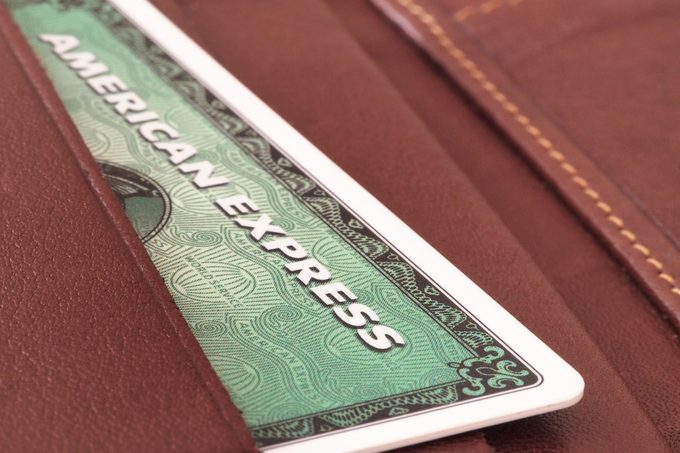Why is American Express not accepted everywhere? We got to the bottom of this credit card conundrum.

This Is Why So Many Retailers Don’t Accept American Express

You’re eating out at a restaurant, and when it comes time to pay the bill, you pull out your American Express card—only to be told that the merchant doesn’t accept that card. If this sounds frustratingly familiar, you may be wondering why American Express is not as widely accepted as other credit cards—especially when traveling abroad. The company boasts more than 141 million customers, which means it’s not a popularity problem. So why is American Express not accepted everywhere?
We wondered the same thing, so we decided to get to the bottom of this money mystery. Read on to find out why some businesses still don’t take American Express.
Get Reader’s Digest’s Read Up newsletter for more interesting facts, money, tech, travel, cleaning and humor all week long.
Why do some places not take American Express?
The answer is simple: Retailers want to keep more money in their pockets. American Express charges stores and restaurants higher fees than other credit card networks like Visa, Mastercard and Discover.
When you buy items with your Amex card instead of another credit card, your favorite store or restaurant will be charged a higher fee. This makes some retailers shy away from accepting your Amex card. This is true of big retailers like Costco (which tries to keep costs low however it can) but especially when it comes to independently owned boutiques and mom-and-pop businesses. The fees charged to stores depend on the type of card processing system the store uses, how many transactions it has and even the type of store it is.
How much does American Express charge merchants?
American Express charges merchants quite a bit more in swipe fees than Visa, Mastercard and Discover do. Amex merchant fees are between 1.5% and 3.3%, while its competitors’ fees are anywhere between 1.15% and 2.5%. So it shouldn’t come as a huge surprise that American Express is not accepted everywhere we shop.
However, the fee gap between Amex and its competitors is getting smaller. According to the Financial Times, American Express said in an investor presentation that it’s “planning to cut its merchant fees by about 2.37% globally,” the lowest level it’s been in two decades.
Why does American Express charge higher fees, anyway?
Typically, banks that issue credit cards can make money in ways besides these credit card fees, like charging interest on your credit card balance, for example. But many Amex holders use an Amex charge card, not a credit card, meaning they have to pay off their bill every month and don’t incur interest on the balance. Because of this, American Express depends more on merchant fees than other credit card companies do.
Now for some good news: The 2023 Nilson Report, a credit card industry resource, found that a whopping 99% of merchants that accept credit cards in the U.S. accept American Express. So while the days of worrying about whether you can use your Amex to pay are nearly over, it’s still smart to have a backup or enough money to pay in cash just in case.
Why trust us
At Reader’s Digest, we’re committed to producing high-quality content by writers with expertise and experience in their field in consultation with relevant, qualified experts. We rely on reputable primary sources, including government and professional organizations and academic institutions as well as our writers’ personal experiences where appropriate. We verify all facts and data, back them with credible sourcing and revisit them over time to ensure they remain accurate and up to date. Read more about our team, our contributors and our editorial policies.
Sources:
- Financial Times: “AmEx to Woo Retailers with Biggest Fee Cut in 20 Years”
- Bankrate: “Average Cost of Credit Card Processing Fees”
- American Express: “Most Frequently Asked Questions”
- Bankrate: “Why American Express Isn’t Universally Accepted”





















